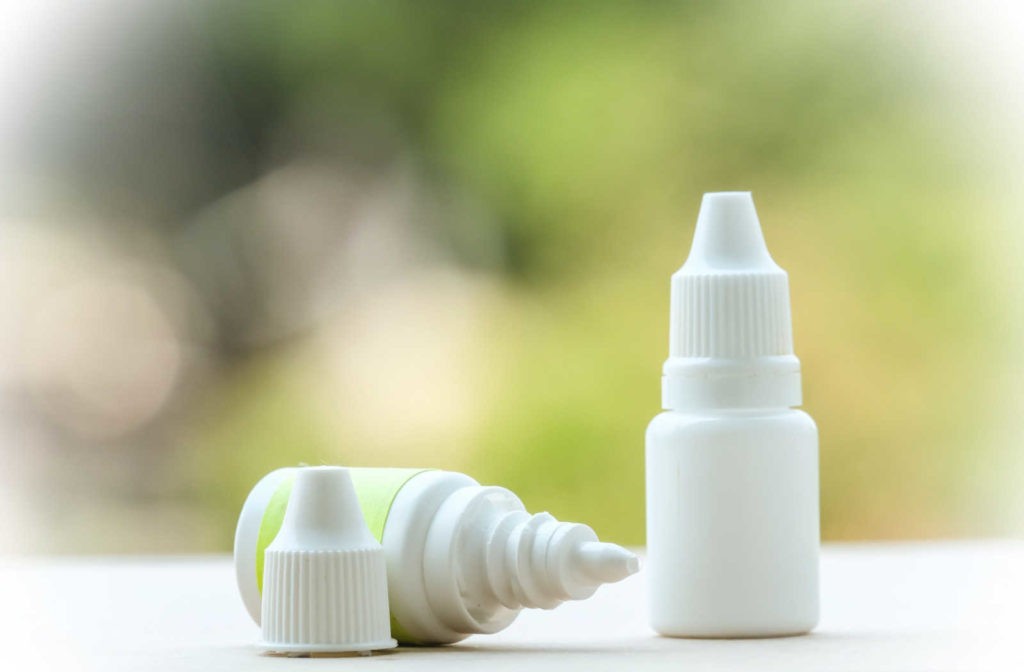Putting in eye drops can sometimes bring an unexpected burning sensation. While a mild, brief sting can be normal, intense or prolonged burning raises questions. This article explores the common causes of burning eye drops, helping you understand when it’s a typical reaction and when it signals a problem needing professional attention.
Common Causes of Eye Drop Burning
Several factors contribute to that uncomfortable burning feeling after using eye drops:
Preservatives
- Benzalkonium Chloride (BAK): This common preservative in eye drops can irritate the eye’s surface, especially with frequent use or in individuals with sensitive eyes. While BAK prevents bacterial growth, it can disrupt the tear film and lead to dryness and inflammation, exacerbating the burning sensation.
Underlying Eye Conditions
- Dry Eye Disease: People with dry eyes often experience burning with eye drops, as the drops themselves can further irritate an already compromised ocular surface. The lack of natural tears exacerbates the effect of any preservatives or other irritating ingredients in the drops.
- Eye Infections or Allergies: Conditions like conjunctivitis (pink eye) or allergic reactions can make the eyes more sensitive, leading to increased burning when eye drops are applied. The drops may even trigger or worsen allergic responses in susceptible individuals.
Incorrect Usage or Contamination
- Touching the Eye with the Dropper Tip: Contact between the dropper tip and the eye can introduce bacteria, leading to contamination and subsequent infection. This can cause significant burning, pain, and redness. Always avoid touching any surface with the dropper tip.
- Using Expired or Damaged Eye Drops: Expired drops may contain degraded ingredients that irritate the eyes, while a broken seal compromises sterility, increasing the risk of infection and burning. Always check expiration dates and ensure the seal is intact before use.
 Two bottles of eye drops, one open and one sealed, illustrating the importance of checking for damage.
Two bottles of eye drops, one open and one sealed, illustrating the importance of checking for damage.
Ingredient Sensitivity
- Specific Medications: Certain medications in eye drops, even those intended to treat eye conditions, can cause burning in some individuals. This can be due to a specific allergy or sensitivity to a particular ingredient.
When to Seek Professional Help
While mild, temporary burning is often harmless, certain signs indicate a need for professional evaluation:
- Severe Burning: Intense pain that doesn’t subside quickly after applying the drops.
- Persistent Burning: Burning that continues for an extended period or worsens over time.
- Associated Symptoms: Accompanying symptoms like blurred vision, redness, swelling, discharge, or pain.
- Suspected Allergic Reaction: Hives, itching, difficulty breathing, or facial swelling.
Minimizing Eye Drop Burning
Here are tips to reduce the likelihood of experiencing burning with eye drops:
- Use Preservative-Free Eye Drops: Opt for preservative-free formulations, particularly for frequent use or if you have sensitive eyes. These come in single-use vials to maintain sterility.
- Proper Administration: Wash your hands thoroughly before applying drops. Avoid touching the tip of the bottle to your eye or any other surface. Tilt your head back, gently pull down your lower eyelid, and instill the prescribed number of drops into the pocket formed. Close your eye gently for a few minutes to allow the medication to spread.
- Follow Instructions: Use eye drops exactly as directed by your doctor or the product label. Do not overuse.
- Consult Your Eye Doctor: Discuss any concerns about eye drop burning with your ophthalmologist or optometrist. They can determine the underlying cause and recommend appropriate treatment or alternative eye drops.
Conclusion
Burning after using eye drops is a common experience often linked to preservatives, underlying eye conditions, incorrect usage, or ingredient sensitivities. While mild and temporary burning can be normal, persistent, severe, or accompanied by other symptoms warrants professional attention. Consulting an eye doctor ensures proper diagnosis, treatment, and guidance on minimizing discomfort and maintaining eye health. Understanding the causes and taking preventive measures can help alleviate the burning sensation and ensure comfortable eye drop use.
